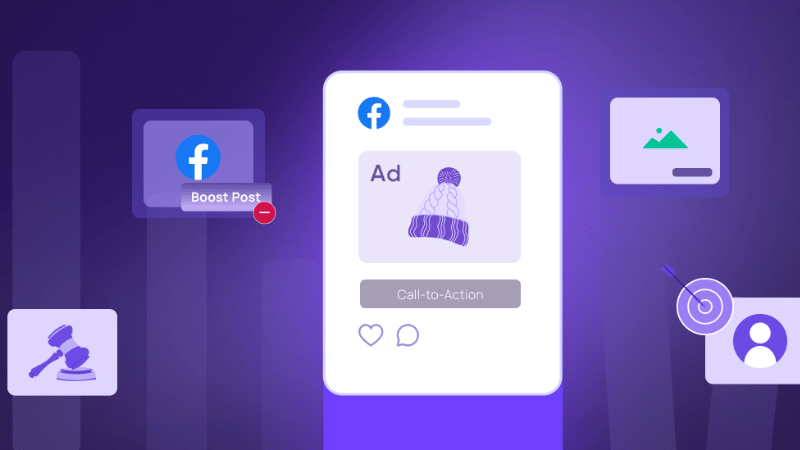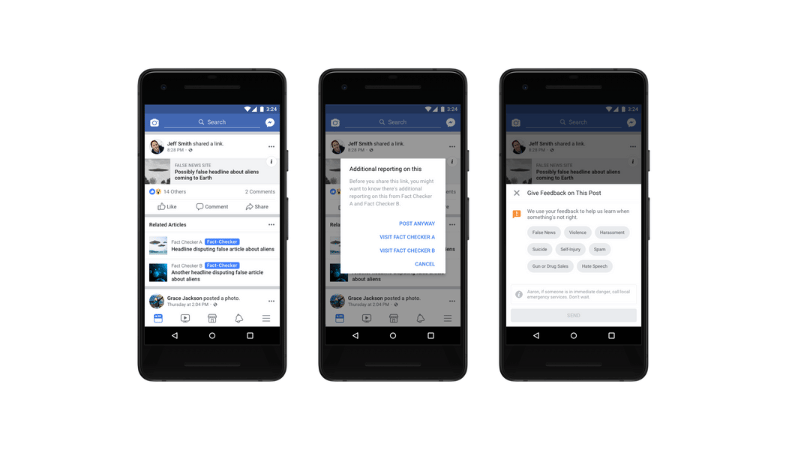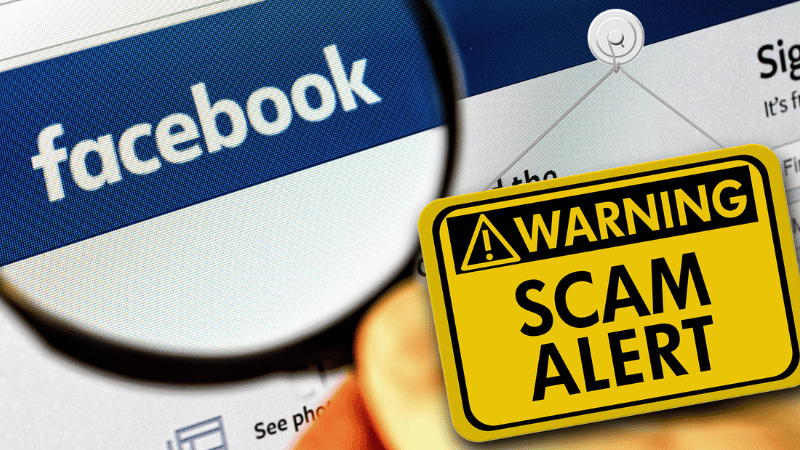Amidst the myriad of content uploaded daily, the mix of real and fake makes it difficult for users to distinguish trustworthy advertisements. How to spot fake ads on Facebook is now not just a desirable skill but a necessity to protect yourself from sophisticated scams disguised by manipulated images, low prices, and fake engagement. Clearly understanding how to spot fake ads on Facebook not only helps you avoid losing money unnecessarily but also keeps your data, account, and trust safe as you browse social media every day.
When a seemingly trustworthy ad becomes a sophisticated trap
Not every ad on Facebook is reliable. Many campaigns are designed to look extremely professional, from the visuals and call-to-action to the interactive comments, making viewers easily believe the product is genuine. Therefore, understanding the platform’s operating mechanism and user psychology is key to identifying which ads are real and which are cleverly disguised scams.

Tactics used to lower user guard
Facebook’s algorithm prioritizes content that attracts high engagement, allowing fake ads to easily infiltrate users’ news feeds. The system cannot immediately distinguish between a legitimate campaign and violating content, especially when images and captions are subtly edited. When an ad has a high volume of engagement, the platform further boosts its visibility, unintentionally helping impersonating pages reach thousands of people in a short time.
Deals and trust in engagement metrics
Users are often captivated by the feeling of getting a “bargain,” so when they see a product with a deep discount, they easily overlook their suspicions. The displayed numbers, like likes, shares, or positive comments, create the illusion of credibility. Many people believe that if hundreds of people are praising it, the ad must be real. This psychology makes viewers susceptible to manipulation and targets of meticulously staged scam campaigns.
Factors making it difficult for viewers to distinguish real – fake
The danger lies in the professionalism of the impersonating pages. They invest in high-quality images, videos, and convincing content, just like a genuine brand. The logo, color scheme, and even the tone of voice are closely mimicked from the original to build trust. When visual and emotional elements are combined, viewers can barely spot the red flags until they lose money or have their personal data stolen.
Seven red flags to identify fake ads on Facebook
How to spot fake ads on Facebook requires careful observation and knowledge of the behavior of fake sales pages. When users are familiar with these unusual characteristics, distinguishing between real and fake becomes much easier.

Unverified fan pages or a lack of transparent information
Reputable sales Facebook pages always have clear information about the brand, address, and contact channels. Conversely, fake Fan pages often lack the blue verification badge, have vague descriptions, or do not cite the product’s origin. Some intentionally name themselves similarly to famous brands to deceive viewers. When you see a page that lacks transparency or was recently created, you should be wary and check carefully before interacting.
Images, videos, edited or copied from other sources
Visual content is the easiest element to identify in a fake ad. Scammers often splice videos, edit colors, or use photos from other websites to create a sense of professionalism. When images look too perfect or show multiple strange watermarks, the content is likely copied. Users should use an image search tool to verify the actual source.
Unusual pricing, promotions far exceeding market rates
Low pricing is the most common lure used by fake ads. If a product is priced significantly lower than the average, the probability is high that it is low-quality or non-existent merchandise. Discounts up to 70–80% are often just a bait for buyers to transfer money upfront. The best way is to compare prices with official channels or trusted distributors.
Links leading off-platform to strange websites
Facebook has a review mechanism, so many scammers embed links leading off-platform to avoid detection. Links with unusual structures or strange characters often lead to phishing or fake websites. Before clicking any link, you should check the URL and ensure it is the brand’s official page or a reputable e-commerce platform.
Automated, inauthentic comments and reviews
An easily noticeable characteristic of fake ads is the comments section being generated in bulk with repetitive content. Fake accounts often use generic profile pictures, have no real activity, and post positive comments to create an illusion of trustworthiness. When you see interactions that lack authenticity or are posted just minutes apart, you should doubt the ad’s veracity.
Logo or brand name different from the original
Genuine brands always maintain consistent branding regarding their logo, color scheme, and font. Fake pages often make slight changes to trick users, such as misspelling the name, changing the background color, or inserting strange characters. By carefully observing the profile picture and banner, you can easily spot the difference. Paying attention to these small details helps avoid falling into the trap of fake branding.
Newly created pages, running aggressive ads, then disappearing
Another sign of fake ads is their frequent and intense appearance in a short period. These pages are typically newly created, spend heavily on ads to reach users quickly, and then disappear after scamming a sufficient number of people. If the Fan page lacks a long post history or contains only ad posts, it is likely a fake page. Tracking its active time and how it interacts with customers will help you assess its credibility more accurately.
Solutions to protect users from scam ads
To limit the risk of being caught in fake ad campaigns, users need to equip themselves with better identification skills and carefully check information before every online action. Facebook is a platform with a massive volume of ads, so filtering and verifying the content source is the crucial first step to avoiding falling into a scam trap.

Check for credibility
Before interacting with or clicking on any ad, users should carefully examine the Fan page or account that published it. A trustworthy page usually has clear information, consistent brand imagery, and has been continuously active for a long period.
If the page has no specific address, minimal content, or was recently created, it is likely a fake page. Additionally, check the comments and reviews from other users to identify unusual signs such as fake responses, repetitive language, or accounts without a profile picture.
Verify information against official channels
After viewing an ad, users should visit the brand’s official website or social media page to compare the content. If the product, price, or promotion does not appear on the official channel, the ad might be fake.
Researching further through a search engine or trusted e-commerce platforms also helps verify the information’s authenticity. This practice not only protects your money but also reduces the risk of having personal data stolen when entering payment information.
Report and enhance security
If a suspicious ad is detected, users should use Facebook’s reporting feature for the system to take timely action. This action helps protect the community from similar scam campaigns.
Additionally, enabling two-factor authentication (2FA), limiting access to unfamiliar applications, and regularly changing passwords are essential measures to enhance account security. By actively protecting themselves, users not only avoid being scammed but also contribute to creating a more transparent and reliable online environment.
Frequently Asked Questions
Immediately upon detection, users should change the passwords for all related accounts, especially Facebook, email, and banking. Simultaneously, enable two-factor authentication to prevent unauthorized access. If payment card information has been compromised, contact the bank to block or reissue the card. Additionally, users should report the scam ad to Facebook to prevent the scammer from distributing it further. Actively controlling the damage within the first 24 hours is a deciding factor in reducing the risk of data loss.
Facebook has an automated review system and a manual verification team, but the sheer volume of ads makes absolute control virtually impossible. The platform is responsible for removing violating ads when reported, but users still act as the first line of defense. Therefore, raising community awareness and early feedback are crucial factors in reducing the spread of fake ads. The combination of the platform, regulatory agencies, and users is what can build a truly safe online environment.